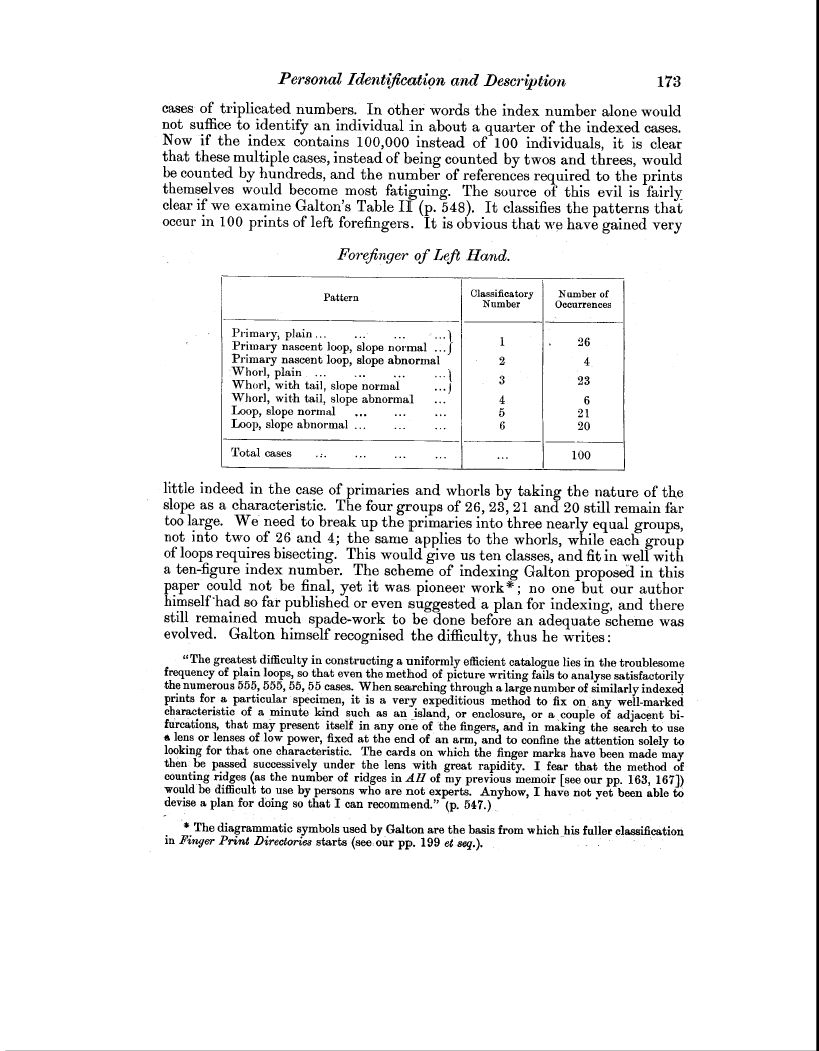| ||||||

OCR Rendition - approximate
Personal Identification and Description 173 cases of triplicated numbers. In other words the index number alone would not suffice to identify an individual in about a quarter of the indexed cases. Now if the index contains 100,000 instead of 100 individuals, it is clear that these multiple cases, instead of being counted by twos and threes, would be counted by hundreds, and the number of references required to the prints themselves would become most fatiguing. The source of this evil is fairly clear if we examine Galton's Table II (p. 548). It classifies the patterns that occur in 100 prints of left forefingers. It is obvious that we have gained very Forefinger of Left Hand.
little indeed in the case of primaries and whorls by taking the nature of the slope as a characteristic. The four groups of 26, 23, 21 and 20 still remain far too large. We need to break up the primaries into three nearly equal groups, not into two of 26 and 4; the same applies to the whorls, while each group of loops requires bisecting. This would give us ten classes, and fit in well with a ten-figure index number. The scheme of indexing Galton proposed in this paper could not be final, yet it was pioneer work*; no one but our author himself' had so far published or even suggested a plan for indexing, and there still remained much spade-work to be done before an adequate scheme was evolved. Galton himself recognised the difficulty, thus he writes "The greatest difficulty in constructing a uniformly efficient catalogue lies in the troublesome frequency of plain loops, so that even the method of picture writing fails to analyse satisfactorily the numerous 555, 555, 55, 55 cases. When searching through a large number of similarly indexed prints for a particular specimen, it is a very expeditious method to fix on any well-marked characteristic of a minute kind such as an island, or enclosure, or a couple of adjacent bifurcations, that may present itself in any one of the fingers, and in making the search to use a lens or lenses of low power, fixed at the end of an arm, and to confine the attention solely to looking for that one characteristic. The cards on which the finger marks have been made may then be passed successively under the lens with great rapidity. I fear that the method of counting ridges (as the number of ridges in .H of my previous memoir [see our pp. 163, 167]) would be difficult to use by persons who are not experts. Anyhow, I have not yet been able to devise a plan for doing so that I can recommend." (p. 547.)_ The diagrammatic symbols used by Galton are the basis from which_ his fuller classification in Finger Print Directories starts (see: our pp. 199 et seq.).
|